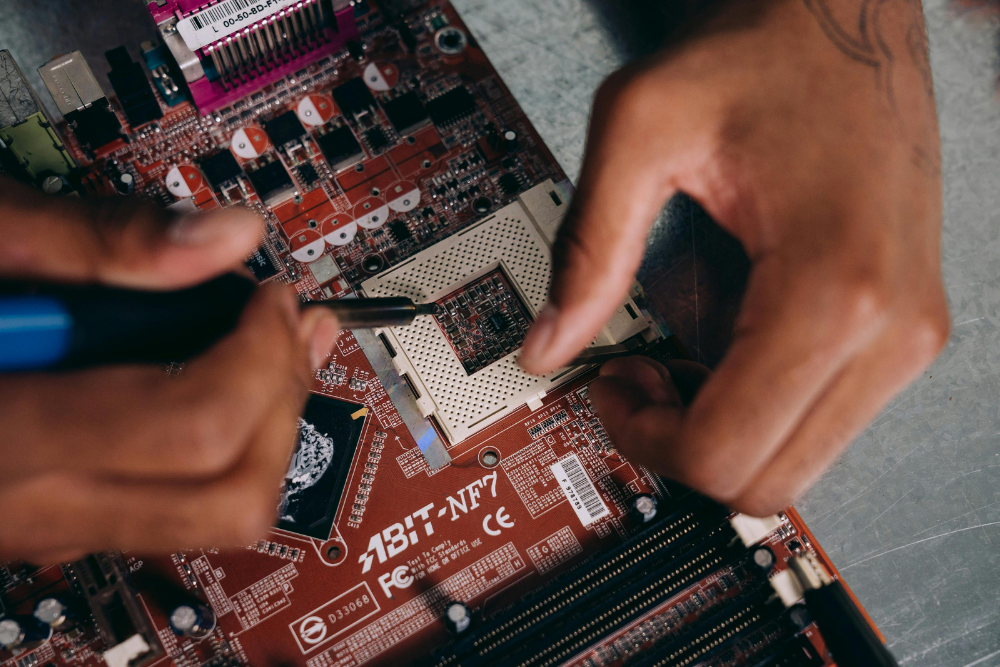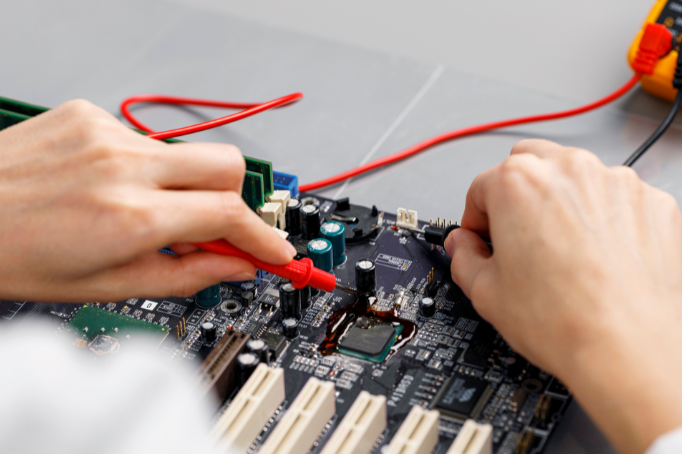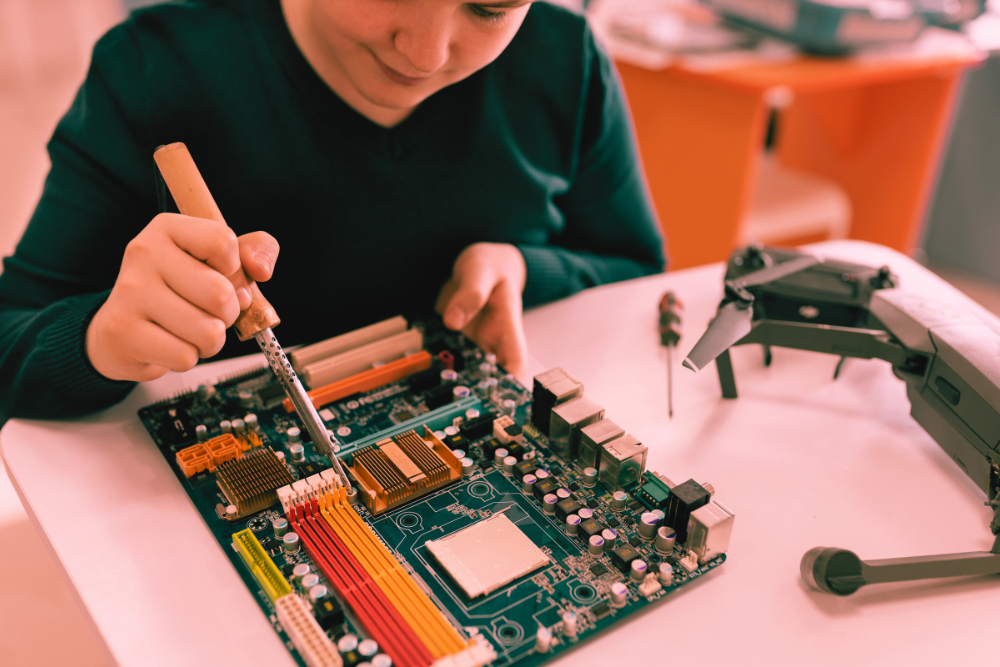As the electronics industry today moves with extreme speed in which precision and cost efficiency dictate commercial success and reliability, the work of voltage regulator ICs cannot be lost. For, essentially, the backbone of power management systems, voltage regulator ICs ensure that electronic devices function within their required power range and thus preserve long-term stability and performance. This article looks at the critical issues business firms in commercial electronics need to pay attention to in choosing voltage regulator ICs, discussing how to be durable, ensure failure is averted, and support scalability for products.
The Business Imperative: The True Cost of Power Instability
The major problem that needs to be considered in the design and manufacturing of commercial electronics is maintaining a consistent and reliable source of power throughout all the components inside that device. Power instability may lead to performance degradation, premature failures, or complete breakdowns in product functionality. After-effects are of great importance, as they can cause detrimental effects on product quality besides harming brands’ reputations, customer satisfaction, and warranty costs.
Voltage regulator ICs ensure that there is a stable output voltage coming out of an unstable input source while preventing the ripple effects of power fluctuations in such a manner as to damage sensitive electronics. This is not merely choosing a generic component off the shelf: selecting a suitable voltage regulator IC requires careful analysis, strategic decision-making, and forward-thinking to ensure long-term stability, cost efficiency, and the success of a product.

Voltage Regulation in Commercial Electronics
Modern commercial electronic devices require that power management systems in them work well for applications like telecommunications, automotive electronics, industrial automation, medical devices, and consumer electronics. While meeting power requirements specifications, practical value is realized in the fact that the performance of the product can contribute to its potential for reliability over a long period.
The power supply systems in commercial electronics fall into two broad categories:
Linear Regulators are ICs that can produce a steady output voltage while dissipating redundant power as heat. They are generally used in areas where low noise with high precision voltage regulation is necessary, such as in medical devices and delicate communication systems. Although they are simple and cost-effective, inefficient conditions may lead to thermal management issues, especially in high-power applications.
Switching Regulators: These are more complex and efficient ICs. They generate the desired output from input voltage by using high-frequency switching. Switching regulators are ideal for power-hungry applications wherein efficiency is most important. Some examples include high-performance computing, automotive electronics and industrial systems. They can be in buck (step-down), boost (step-up) or even a buck-boost converter, thereby offering more flexibility in meeting diverse voltage needs.
The choice of regulator type should be fundamentally based on its ability to meet the power requirements and performance targets of a device of a commercial electronics manufacturing company in terms of efficiency over the long term.
Long-term reliability over commercial applications is achieved by ensuring that the chosen regulator maintains longevity and stability under commercially employed conditions.
The most important benefit of voltage regulator ICs is their ability to provide flat output voltages, irrespective of the input supply voltage. However, this stability in the long term is not a matter of mere plug-and-play installation of the right IC. In commercial applications, the following are important factors that come into play, ensuring the sustained performance of voltage regulator ICs :
1. Thermal Management
The greatest challenge with the voltage regulator ICs is heat dissipation. Excess heat can damage components, dissipate efficiency, and eventually lead to possible failure in due course. This is crucial, especially with high-power applications such as automotive electronics and industrial control systems with fluctuating power demands and requiring components to work under extremely adverse environments.
Switching regulators are more thermally efficient than linear regulators, yet design is not exempt. For example, to avoid thermal runaway, a good PCB layout, heat sinks, and adequate airflow need to be incorporated. In this regard, businesses must ensure that their voltage regulator ICs are chosen based on thermal management for the best operational performance in a changing environment.
2. Load Regulation and Ripple Reduction
Load regulation is the ability of a voltage regulator IC to keep the output voltage constant and unaffected by variations in the load current. This is particularly important for devices whose power demand varies with time, such as in the case of mobiles, where the input current drawn from the battery is constantly changing due to screen brightness, data usage, and processing power among other parameters.
In addition, ripple reduction is required for sensitive applications that call for clean power to avoid interference of noise with signal integrity. Abnormally high ripple can interfere with audio or video transmission or data transmission and render a product useless. For commercial products developed by businesses that focus on clear, stable signals for production, it is important to select voltage regulator ICs that have low ripple and strong load regulation.
3. Power Efficiency
For applications that demand strict power consumption, power supply efficiency is perhaps the most crucial to commercial electronics. For example, in handheld medical devices and IoT sensors, the prime differentiator can be in longer battery life. Switching regulators are preferred over linear regulators for such applications because they have higher efficiency and require fewer components to step down the input voltage, which means less waste is converted to heat.
Such a maximization in the power efficiency of voltage regulation systems automatically translates to cheaper operating costs, longer product lifecycles, and a more environmentally friendly device for companies focused on sustainability and energy consumption cutting. High-efficiency voltage regulators can reduce overall power consumption, supporting a more compact design and reducing environmental impact.
4. Component Quality and Reliability
Commercial electronics depend on the quality of voltage regulator ICs to have long-term stability. In some cases, poor-quality components can cause failure, especially at high load times, increased failure rates, high-cost restoration or even product recall. The manufacturer should then be cautious with the supplier, making sure that his IC’s supplier has a quality control process and is a holder of certain kinds of certifications. These can include ISO 9001 or automotive-grade certifications such as IATF 16949.
To develop a good brand reputation, companies have to invest in high-quality and reliable voltage regulator ICs to reduce defects, warranty claims, and customer complaints. The components should also be tested under real-world conditions, and the ICs should remain stable under various operational environments.

5. Scalability and Adaptability
The larger a business grows, the more extensive its product line will be, and scalability is an important factor here when deciding on power management. Scalable from any perspective is a very valuable voltage regulator IC that would scale with power needs without compromising performance and without major redesign.
For example, one family of ICs can be manufactured in different ratings on output voltage or current so that a particular solution is used uniformly across several products. This automatically reduces the requirement to have numerous part numbers, and hence complexity in design will decrease and the new products will be brought to the market early.
Another important aspect is the adaptability to a wide range of input voltages, particularly for businesses dealing with different power standards in various global markets. Other voltage regulator ICs can accommodate input ranges, including 8V to 40V, which can be used flexibly to serve a wide range of regions without requiring extensive redesign.
6. Advanced Features and Protection Mechanisms
Voltage regulators are no longer just plain current provision devices but have advanced features meant to provide superior performance and reliability in commercial applications. Examples include the following overcurrent protection, which is designed to prevent damage from a short circuit or excessive pull of current, and overvoltage protection, which eliminates the possibility of the output voltage surging to levels that would harm their downstream components.
Thermal Shutdown: It prevents overheating of the IC by shutdown or reducing output power when the temperature crosses safe limits.
Soft-Start Features: Provides a ramped power-up sequence, thus minimizing inrush current and extending component life.
Companies developing products in sensitive sectors like medical or aerospace can significantly benefit from these protection mechanisms with safety and longevity in designs.
7. Cost-Effectiveness and Value Engineering
While performance, reliability, and scalability are primary concerns, the cost of voltage regulator ICs also is an important component of overall product design for a business. Businesses operate in extremely competitive markets, with just the smallest margin between profit and loss. The challenge often becomes balancing cost and performance.
Whereas an organization may have to compromise on a relatively inexpensive IC if the application is not very sensitive or demanding in accuracy or efficiency, there are instances when the more expensive ICs will pay for their higher cost by having a lower warranty expense and longer life, such that the returns come long after the initial investment.
Conclusion: Strategic IC Selection for Long-Term Stability
For business ventures in commercial electronics, voltage regulator ICs are more than just parts- they’re key components for a product to work. Proper knowledge of the power requirements in the application and proper selection of the relevant parts from the appropriate set of voltage regulators can ensure long-term stability and reliability as well as efficiency in operations.
But above all of the other concerns thermal management, load regulation, ripple reduction, power efficiency, component quality, scalability, and advanced features prevent their products from failing due to power, thus becoming operational for years. With a technology sector where failure costs are high and customer expectations are never-ending, voltage regulator ICs are the unspoken heroes that will allow businesses to provide stable, high-performance electronics to the market eventually leading to the sustenance of growth, profitability, and brand loyalty.
About The Author
Elena Tang
Hi, I’m Elena Tang, founder of ESPCBA. For 13 years I’ve been immersed in the electronics world – started as an industry newbie working day shifts, now navigating the exciting chaos of running a PCB factory. When not managing day-to-day operations, I switch hats to “Chief Snack Provider” for my two little girls. Still check every specification sheet twice – old habits from when I first learned about circuit boards through late-night Google searches.
